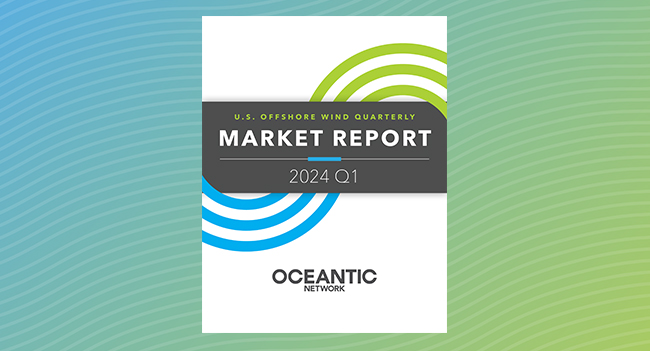
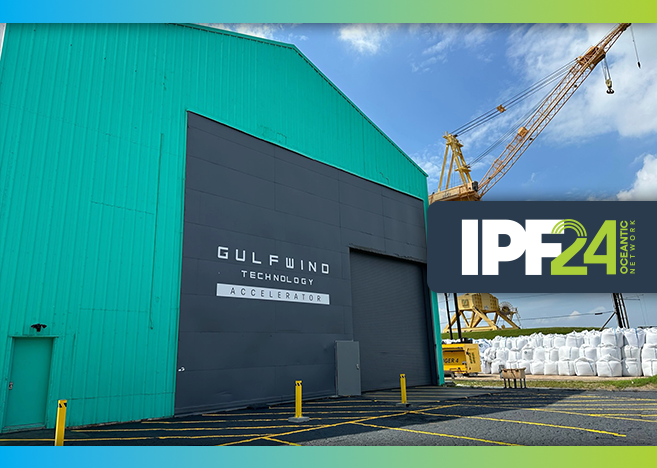
What’s Up in the Gulf of Mexico
Key Learnings That are Helping to Grow Offshore Wind With commercial-scale projects now spinning off the East Coast, the U.S. offshore wind industry is officially up-and-running. Such developmen...Read More
Maximizing Your Content Marketing Strategy With Oceantic Network’s Tools: Speaking Opportunities and Sponsorship/Partnership at Events
Maximizing Your Content Marketing Strategy is a comprehensive series on how Oceantic Network members can utilize our tools to produce content that will stand out. Let's Review: The Significance of ...Read More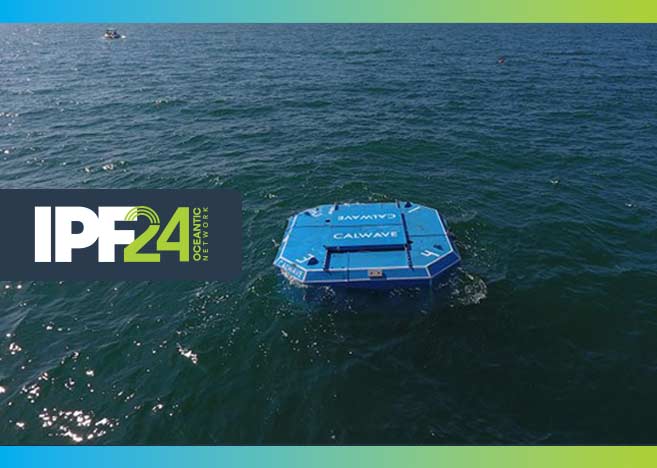
Maximizing Ocean Energy Potential: A New Era in Offshore Renewable Energy
Guest article written by Marcus Lehmann, Co-Founder & CEO of CalWave The U.S. offshore wind industry is installing steel in the water for the first time at a commercial scale. The first utility...Read More
Leadership 100: Executive Summary & Meeting Notes
Oceantic Network’s annual Leadership 100 Summit gathers U.S. offshore wind leaders for an intimate working meeting to identify the industry’s pressing, shared challenges and develop a...Read More
Industry Challenges Not Unique to U.S. Offshore Wind
Here’s why Burns & McDonnell remains confident in the industry despite recent hiccups. A little more than seven years ago, Burns & McDonnell had no involvement in the offshore wind indust...Read More
The Opportunity is Now! Join the Growing Offshore Wind Supply Chain
It’s a good time to enter the offshore wind supply chain. State demand for offshore wind energy has never been higher, the federal government continues to identify and auction new sites, and proj...Read More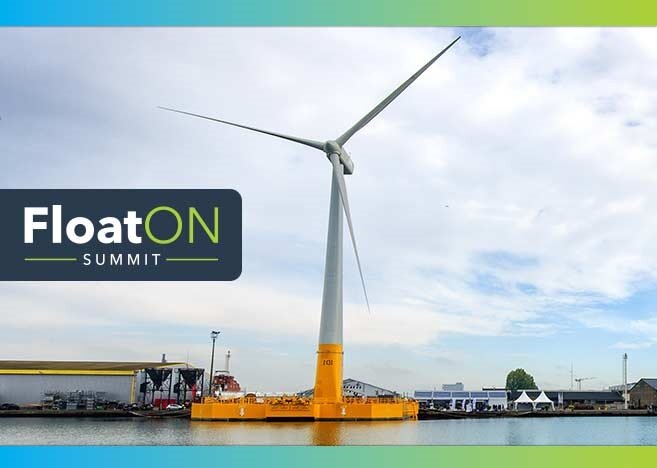
Charting a Course for Floating Offshore Wind: Oceantic Network’s FloatON Summit at IPF
Floating offshore wind is the next chapter of the global renewable energy journey, and one Oceantic Network is eager to be at the forefront of. Just last month, we convened industry minds, governm...Read More
Offshore Wind Innovators Gain Visibility on the IPF Startup Alley Stage
Increasing U.S. demand for offshore wind power is creating greater pressure on the industry to promote innovation, opportunity and new business growth. That is why for the third straight year Oceantic...Read More
Maximizing Your Content Marketing Strategy with Oceantic Network’s Tools: The Events Guide
Maximizing Your Content Marketing Strategy is a comprehensive series on how Oceantic Network members can utilize our tools to produce content that will stand out. In the dynamic realm of content ma...Read More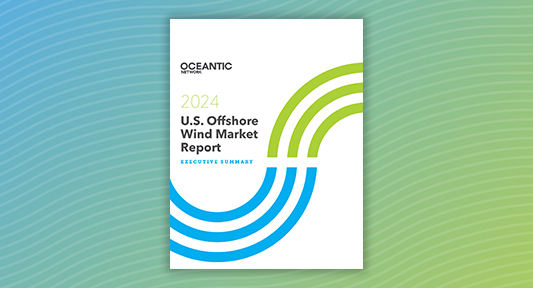
2024 U.S. Offshore Wind Market Report
The Network’s 2024 U.S. Offshore Wind Market Report shares breaking details on events, market trends, supply chain advancements, and policy changes, ensuring companies in the supply chain are inform...Read More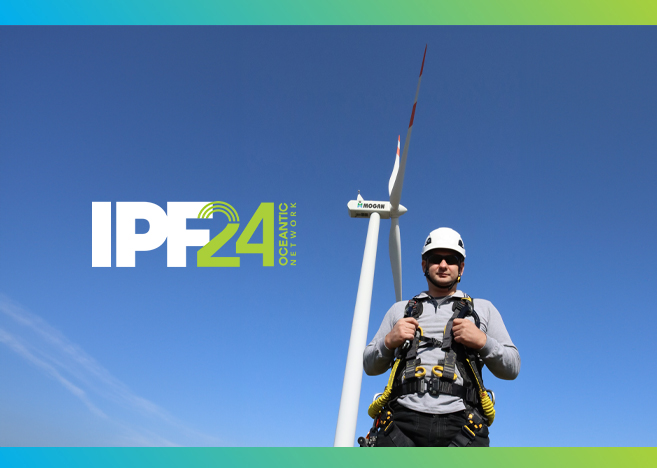
Mitigating Risk in the Supply Chain is Critical to Driving Offshore Wind Success
Mitigating Risk in the Supply Chain is Critical to Driving Offshore Wind Success: How Mogan International is Building its Business Pipeline As federal and state governments continue to op...Read More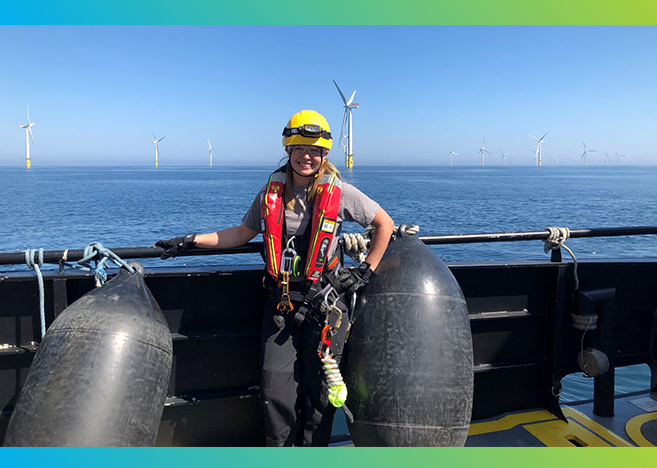
Samantha Mullin: Opening Doors for Future Offshore Wind Champions
Samantha Mullin: Opening Doors for Future Offshore Wind Champions Among all the parts needed to construct an offshore wind turbine, the most critical are the people doing the work to make the proj...Read More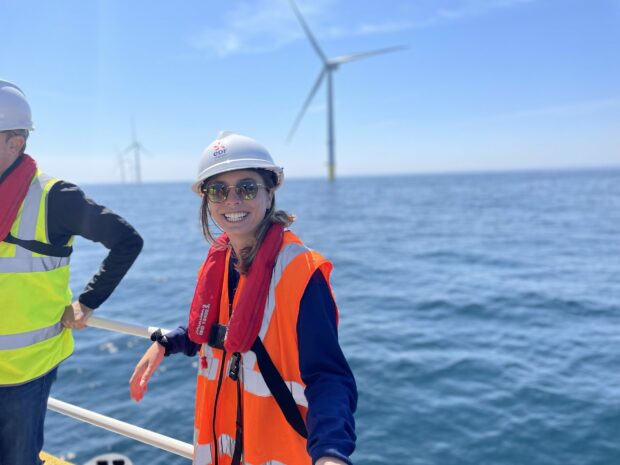
The LinkedIn Cold Call: How one young professional used social media to get her dream job in offshore wind
Turbine Climb June 2022 Holly Rubloff is an expert at “the LinkedIn cold call.” It’s a strategy she used to score a spot in Danish turbine manufacturer Vestas’ Graduate Programme, ...Read More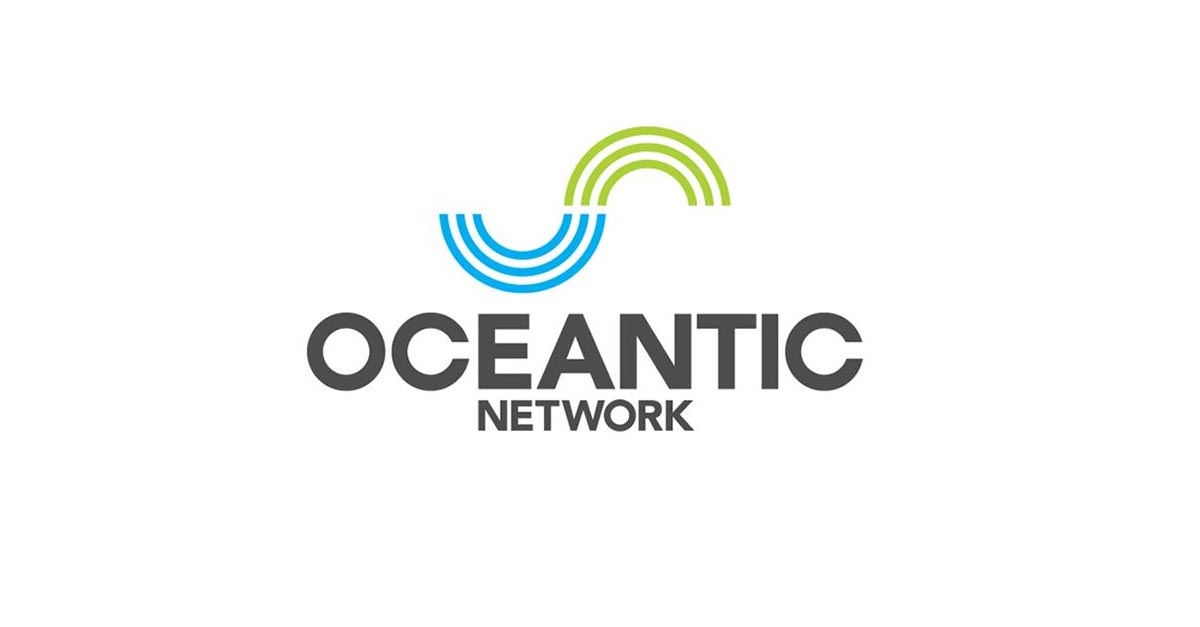
CEO Corner | A Year in Review: The Network’s Impact in 2023
While the industry experienced significant macroeconomic challenges in 2023, Oceantic Network has been instrumental in guiding policymakers through the complexities of the offshore wind sector. Our be...Read More
“How Big Things Get Done” in Offshore Wind: A 2024 IPF Keynote
“How Big Things Get Done” In Offshore Wind: A 2024 IPF Keynote Businesses across the board launch large projects all the time. These projects, and the industries themselves, require new technol...Read More
New Scientific & Technical Workshop Track Added to 2024 IPF Week
Calling all engineers and scientists! You spoke, we listened, and this year we’ve added a Scientific & Technical Workshop Track to the 2024 International Partnering Forum (IPF Week), taking ...Read More
Walk the red carpet at 2024 IPF with the U.S. premiere of Planet Wind
Walk the red carpet at 2024 IPF with the U.S. premiere of Planet Wind Oceantic Network (formerly the Business Network for Offshore Wind) is proud to announce the highly anticipated U.S. premiere o...Read More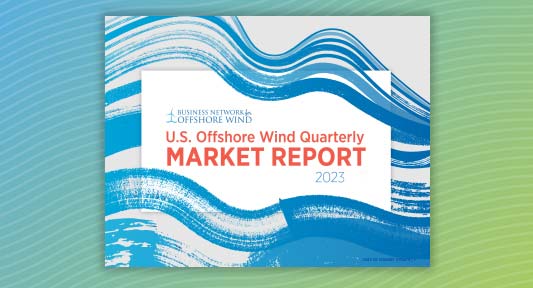
2023 (Q3) U.S. Offshore Wind Quarterly Market Report
The Oceantic Network (formerly the Business Network for Offshore Wind) releases its U.S. Offshore Wind Quarterly Market Report in April, July, October, and January. Each builds off our U.S. Offshore W...Read More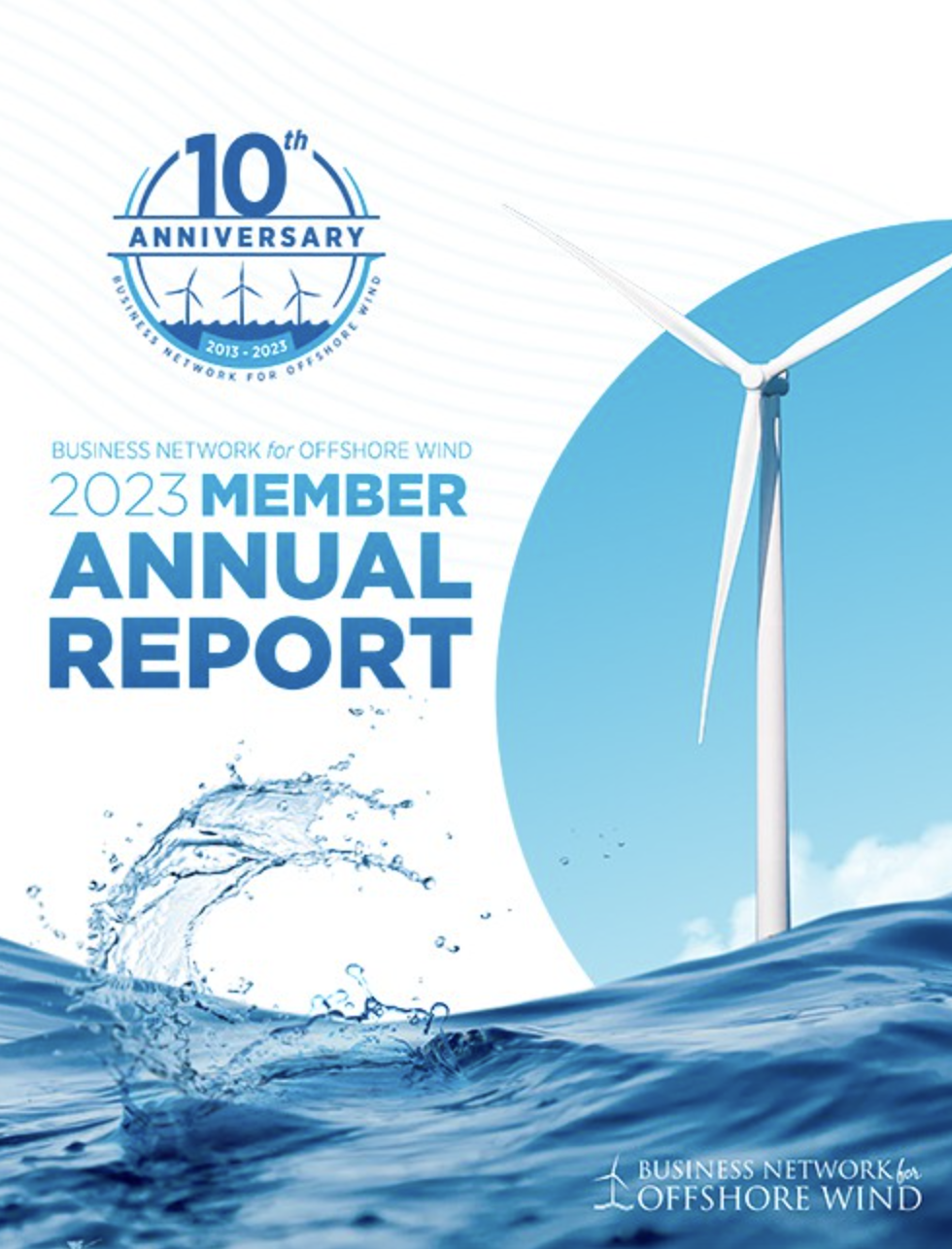
2023 Member Annual Report
The Member Annual Report provides an overview of the Network’s activities and accomplishments over the past year. The 2023 report also showcases the Network’s 10-year anniversary, including a...Read More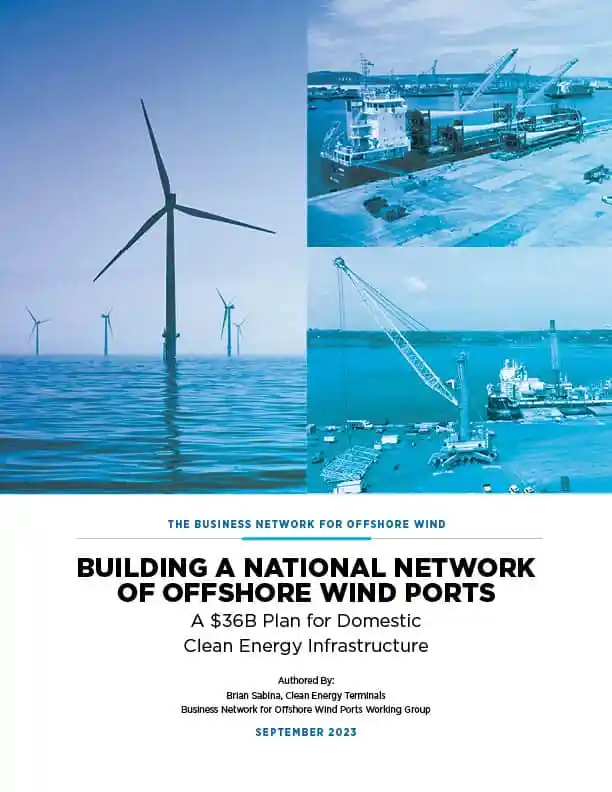
Building a National Network of Offshore Wind Ports
The Network’s report, Building a National Network of Offshore Wind Ports: A $36B Plan for Domestic Clean Energy Infrastructure highlights the urgent need for both public and private invest...Read More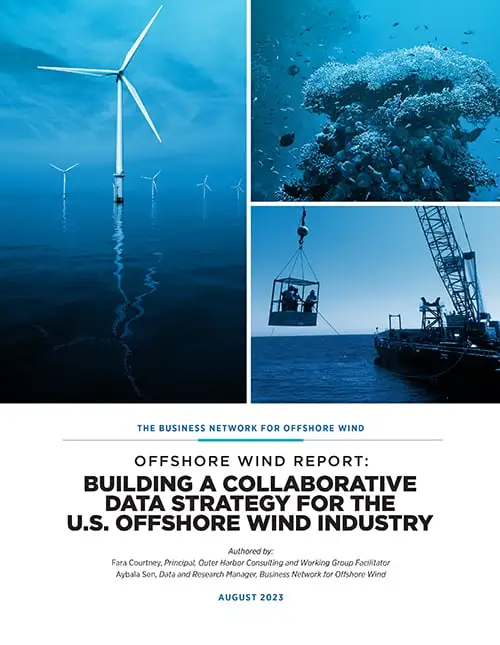
Building a Collaborative Data Strategy for the U.S. Offshore Wind Industry
The Network’s report, Building a Collaborative Data Strategy for the U.S. Offshore Wind Industry highlights the need for and benefits of developing a strategic, industry-wide approach to c...Read More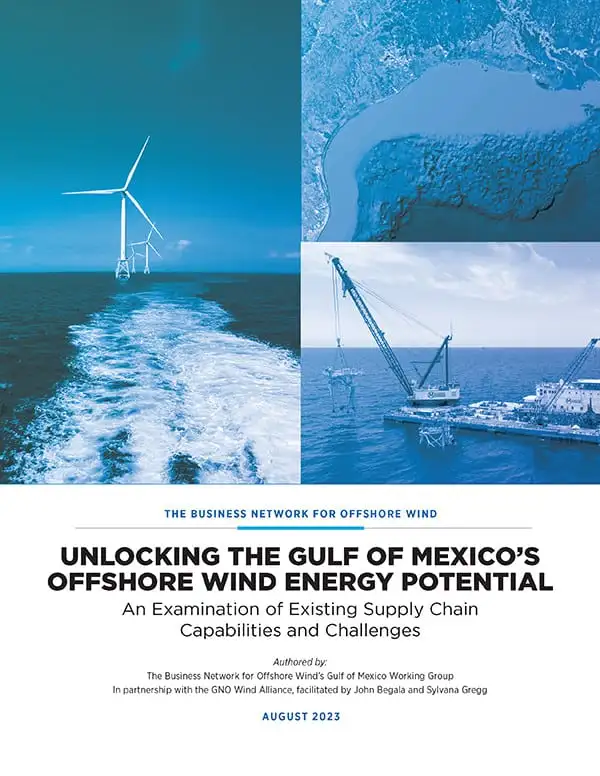
Unlocking the Gulf of Mexico’s Offshore Wind Energy Potential
The Network’s report Unlocking the Gulf of Mexico’s Offshore Wind Energy Potential addresses the region’s unique potential for offshore wind development. Authored in partnership with G...Read More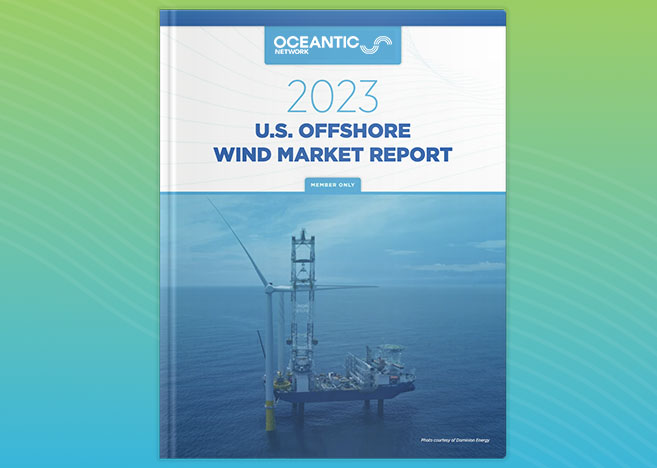
2023 U.S. Offshore Wind Market Update & Insights
The 2023 U.S. Offshore Wind Market Report includes insights into federal, state, and private sector actions that lay at the center of this rapid market acceleration, committed the U.S. to a path of de...Read More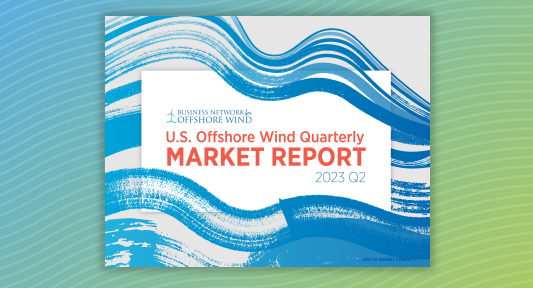
2023 (Q2) U.S. Offshore Wind Quarterly Market Report
The Oceantic Network releases its U.S. Offshore Wind Quarterly Market Report in April, July, October, and January. Each quarterly report builds off our U.S. Offshore Wind Annual Market Report a...Read More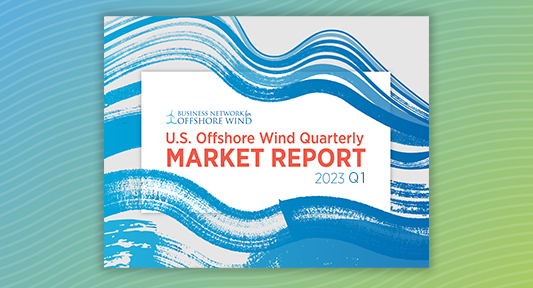
2023 (Q1) U.S. Offshore Wind Quarterly Market Report
The Oceantic Network releases its U.S. Offshore Wind Quarterly Market Report in April, July, October, and January. Each quarterly report builds off our U.S. Offshore Wind Annual Market Report a...Read More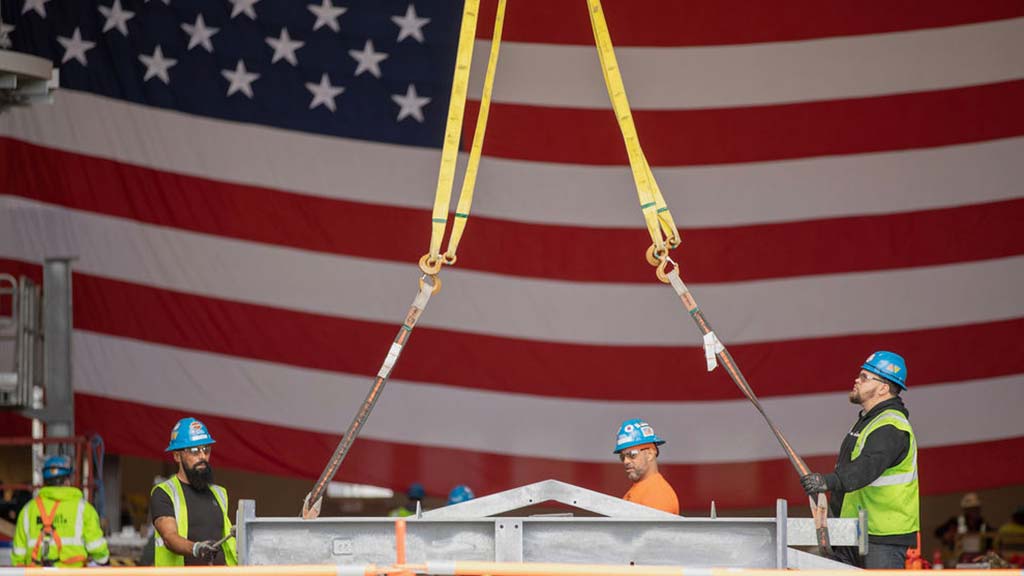
Supply Chain Road Map for Offshore Wind Energy in the United States
The Supply Chain Road Map for Offshore Wind Energy in the United States is a collaborative study co-authored by the Oceantic Network and the National Renewable Energy Laboratory and in collaboratio...Read More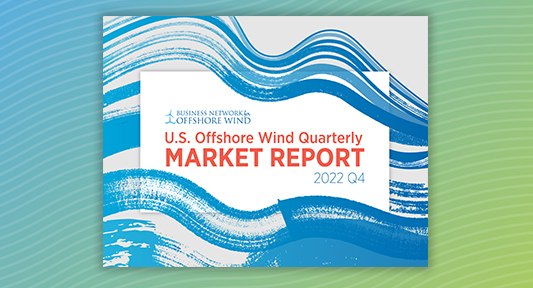
2022 (Q4) U.S. Offshore Wind Quarterly Market Report
The Oceantic Network releases its U.S. Offshore Wind Quarterly Market Report in April, July, October, and January. Each quarterly report builds off our U.S. Offshore Wind Annual Market Report and...Read More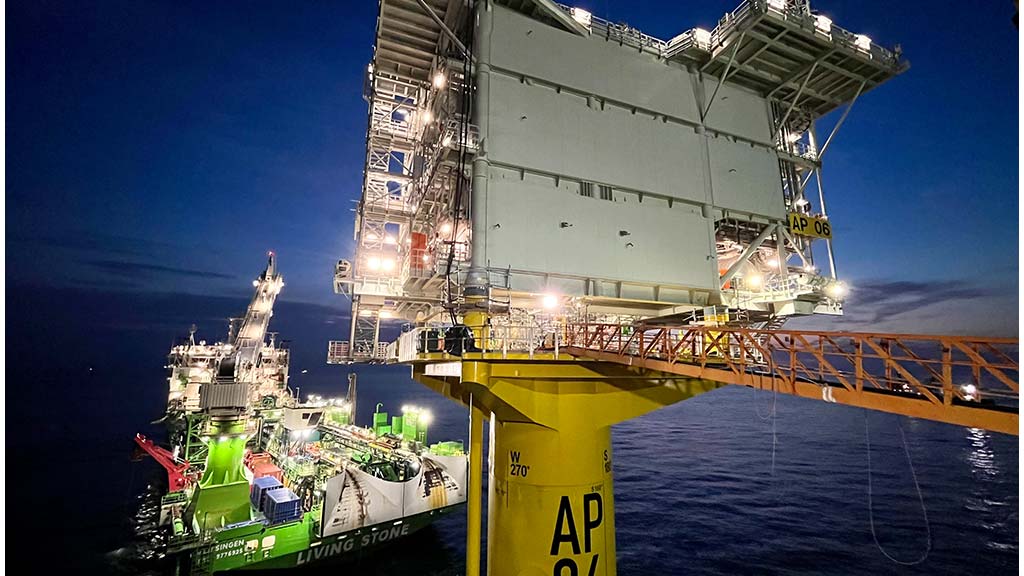
Coordinated Transmission Development for Offshore Wind in Multi-State RTOs
The Oceantic Network’s Proposal for Coordinated Transmission Development for Offshore Wind in Multi-State RTOs outlines a framework for greater regional collaboration on offshore wind transmission p...Read More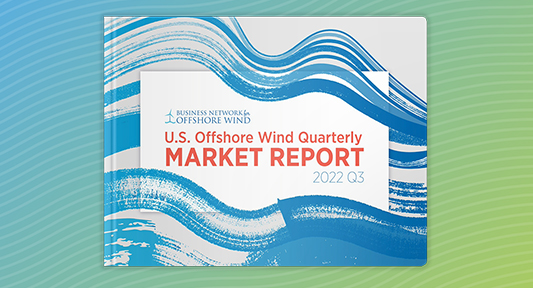
2022 (Q3) U.S. Offshore Wind Quarterly Market Report
The Oceantic Network releases its U.S. Offshore Wind Quarterly Market Report in April, July, October, and January. Each quarterly report builds off our U.S. Offshore Wind Annual Market Report and...Read More
Scott Jensen, Rhode Island Dept. of Labor and Training (S01 E18)
Our guest this episode is Scott Jensen, Director of the Rhode Island Dept. of Labor and Training. We start by looking at the Block Island Wind Farm, the nation’s first and still only operating offsh...Read More
Lorry Wagner, LEEDCo (S01 E15)
Our guest this episode is Lorry Wagner, president of LEEDCo, the Lake Erie Energy Development Corporation, and the developer of Icebreaker Wind. LEEDCo is fairly unique as an offshore wind developer i...Read More
Jason Folsom, MHI Vestas (S01 E12)
Our guest this episode is Jason Folsom, National Sales Director for MHI Vestas U.S. Jason has been active in the offshore wind industry for more than a decade and has seen a lot of changes, so we star...Read More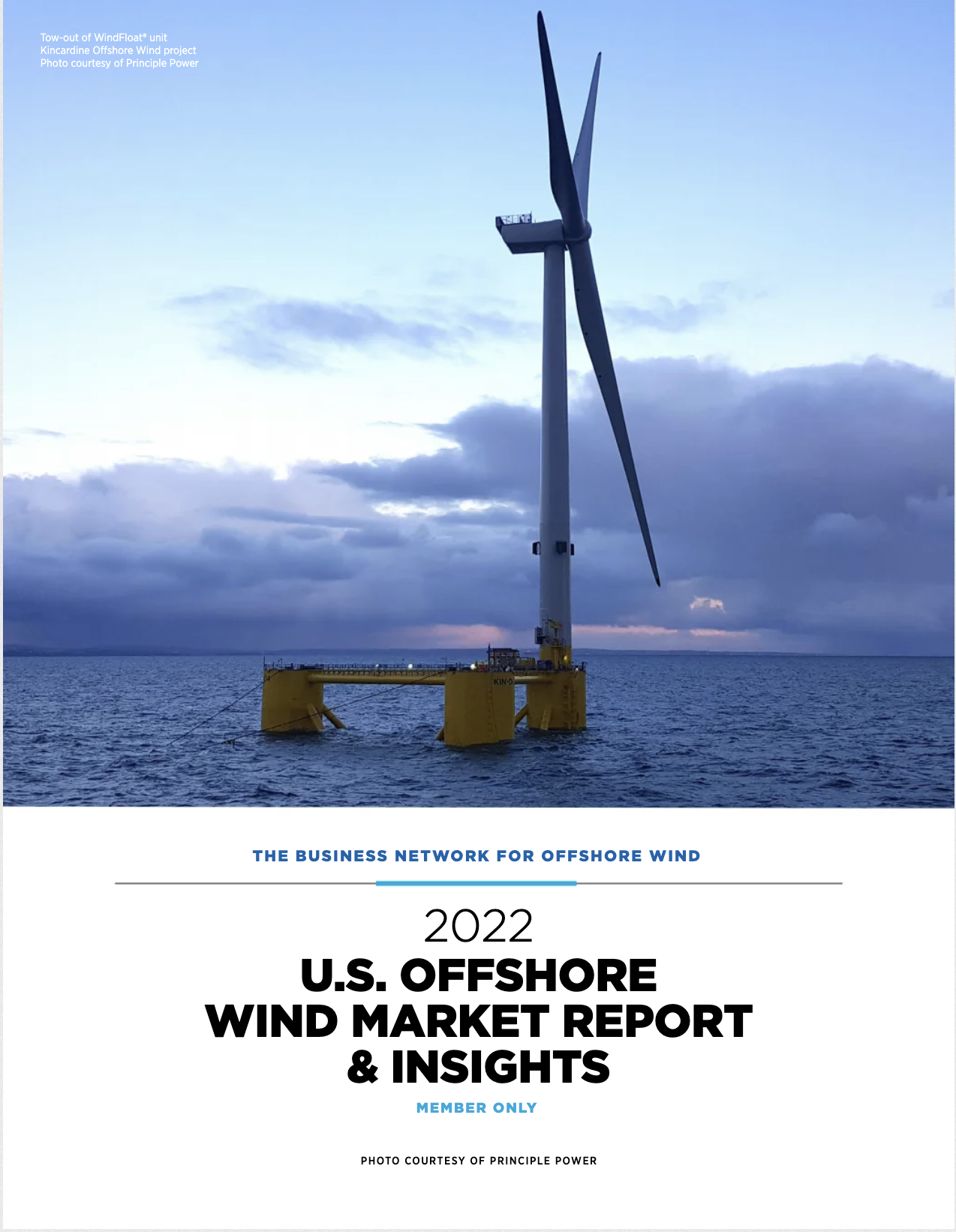
2022 U.S. Offshore Wind Market Update & Insights
Offshore wind is quickly becoming a national industry in the United States. The U.S. Bureau of Ocean Energy Management is advancing Wind Energy Areas in every major U.S. body of water – the Atlantic...Read More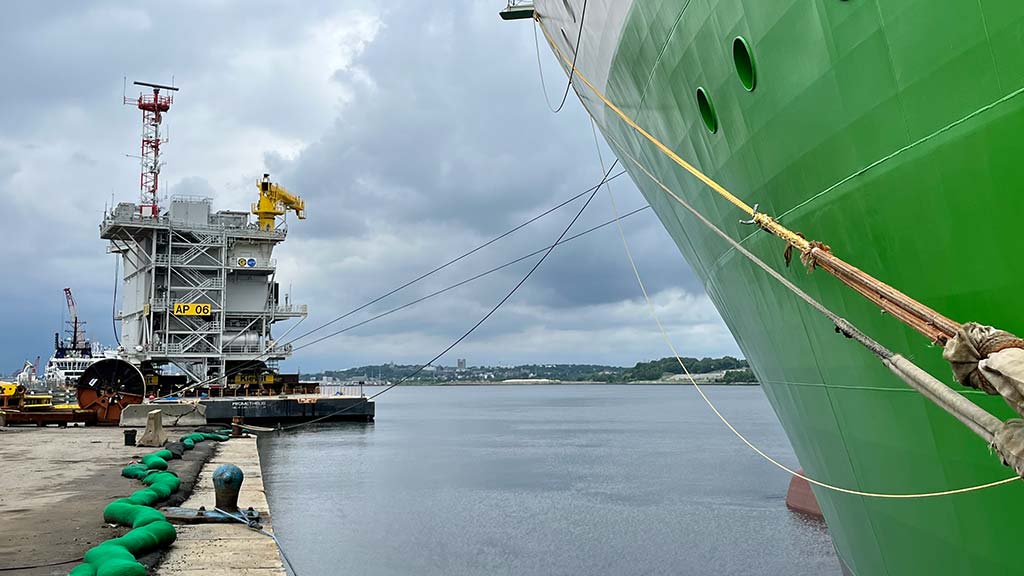
Advancing Policy Measures to Drive Development of the Domestic Offshore Supply Chain
The Oceantic Network’s Advancing Policy Measures to Drive Domestic Supply Chain report analyzes current policies and barriers to developing the offshore wind industry and details federal and state p...Read More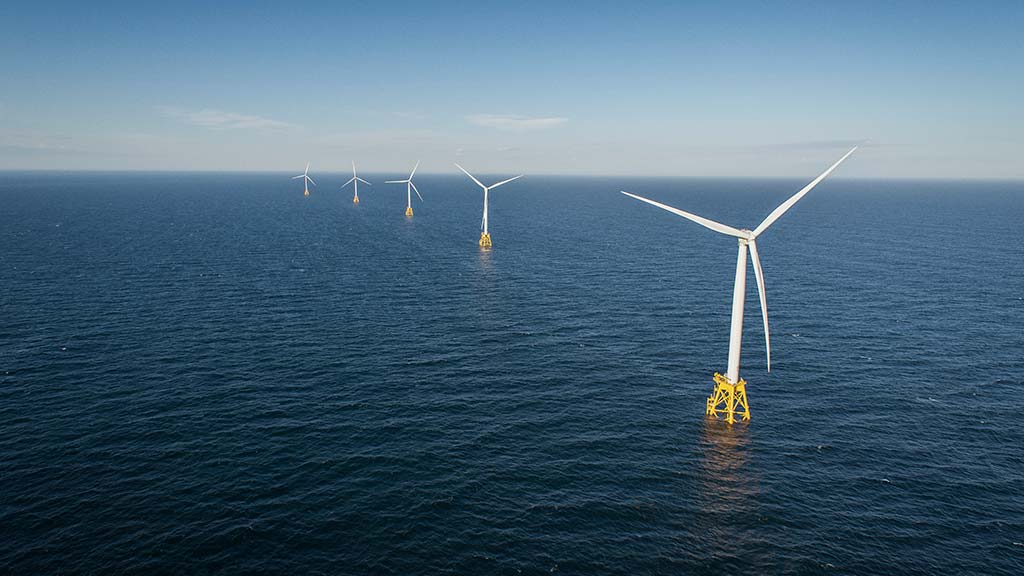
The Demand for a Domestic Offshore Wind Energy Supply Chain
The Demand for a Domestic Offshore Wind Energy Supply Chain report provides a high-level assessment of the demand for deployment, workforce, ports, vessels, and components required to reach the U.S.�...Read More
Walter Cruickshank and Jim Bennett, BOEM (S01 E06)
Our guests this episode are Walter Cruickshank and Jim Bennett, the Acting Director and the Program Manager for Offshore Renewables, respectively, at BOEM – the U.S. Bureau of Ocean Energy Managemen...Read More
Alicia Barton, President and CEO of NYSERDA (S01 E05)
Our guest for this episode is Alicia Barton, President and CEO of NYSERDA, the New York State Energy Research and Development Authority. Alicia is an offshore wind veteran with over a decade of exp...Read More
A.I. on the High Seas (Season 3 EP 10)
Technological advances are making ocean mapping and offshore data collection easier, safer, and more accurate. One company at the forefront of this opportunity is Saildrone, who are utilizing their in...Read More
From Nantucket Sound to Vineyard Wind: The Evolution of U.S. Offshore Wind (Season 3 Episode 9)
The Biden Administration’s approach to kickstarting U.S. offshore wind deployment created an advancement of projects through the federal permitting process. Guest Matt Palmer, President of Wood Thil...Read More
Submarine Cables: Overcoming Supply Chain Bottlenecks (Season 3 Episode 7)
Supply chains across the world are being impacted by the effects of COVID-19. Manufacturing and production lines across America, including for offshore wind, have experienced backlogs. LS Cable USA’...Read More
Labor Unions and the Key to Getting Steel in the Water (Season 3 Ep 6)
The United Brotherhood of Carpenters’ David Borrus weighs in on the intensifying workforce demands of the U.S. OSW industry and the role organized labor can play to meet these growing needs. New pro...Read More
Washington State’s Unique Opportunity in Offshore Wind (Season 3 Episode 8)
Washington State has an extensive maritime history, advanced industry assets, and experience with large-scale electricity generation. So, why aren’t we hearing more about offshore wind in Washington...Read More
The Future of Wind is Floating (Season 3 Ep 5)
The U.S. is poised to emerge as a leader in the floating offshore wind space, as OSW areas in Northern and Central California advance. Three influential women in floating offshore wind - Siemens Games...Read More
2021 U.S. Offshore Wind Market Update & Insights
The U.S. Offshore Wind Market Report & Insights 2021 offers an analysis of federal and state government activity, which will help you better evaluate how the latest offshore wind industry developm...Read More
Janice Fuller, Lawrence Mott & Petter Shattuck, Anbaric (S02 E06)
Janice Fuller, Lawrence Mott, and Peter Shattuck from Anbaric joined us to discuss Anbaric’s unique approach to offshore wind transmission, including the company’s OceanGrid proposals and some cri...Read More
Mark Mitchell, Dominion Energy (S02 E05)
Mark Mitchell from Dominion Energy joined us to discuss the Coastal Virginia Offshore Wind (CVOW) project, Dominion Energy’s recently-announced intention to construct a Jones Act-compliant offshore ...Read More
Kent Herzog & Tony Appleton, Burns & McDonnell (S02 E04)
Kent Herzog and Tony Appleton from Burns & McDonnell joined us to discuss offshore wind transmission, ports and harbors, and permitting. Credits: Content, audio engineering, and editing by Bra...Read More
Mads Bernitt, Lautec (S02 E03)
Mads Bernitt joined us to discuss Lautec’s combined consultancy/IT approach to optimizing offshore wind development, including data integration and analysis for use in benchmarking vessel operations...Read More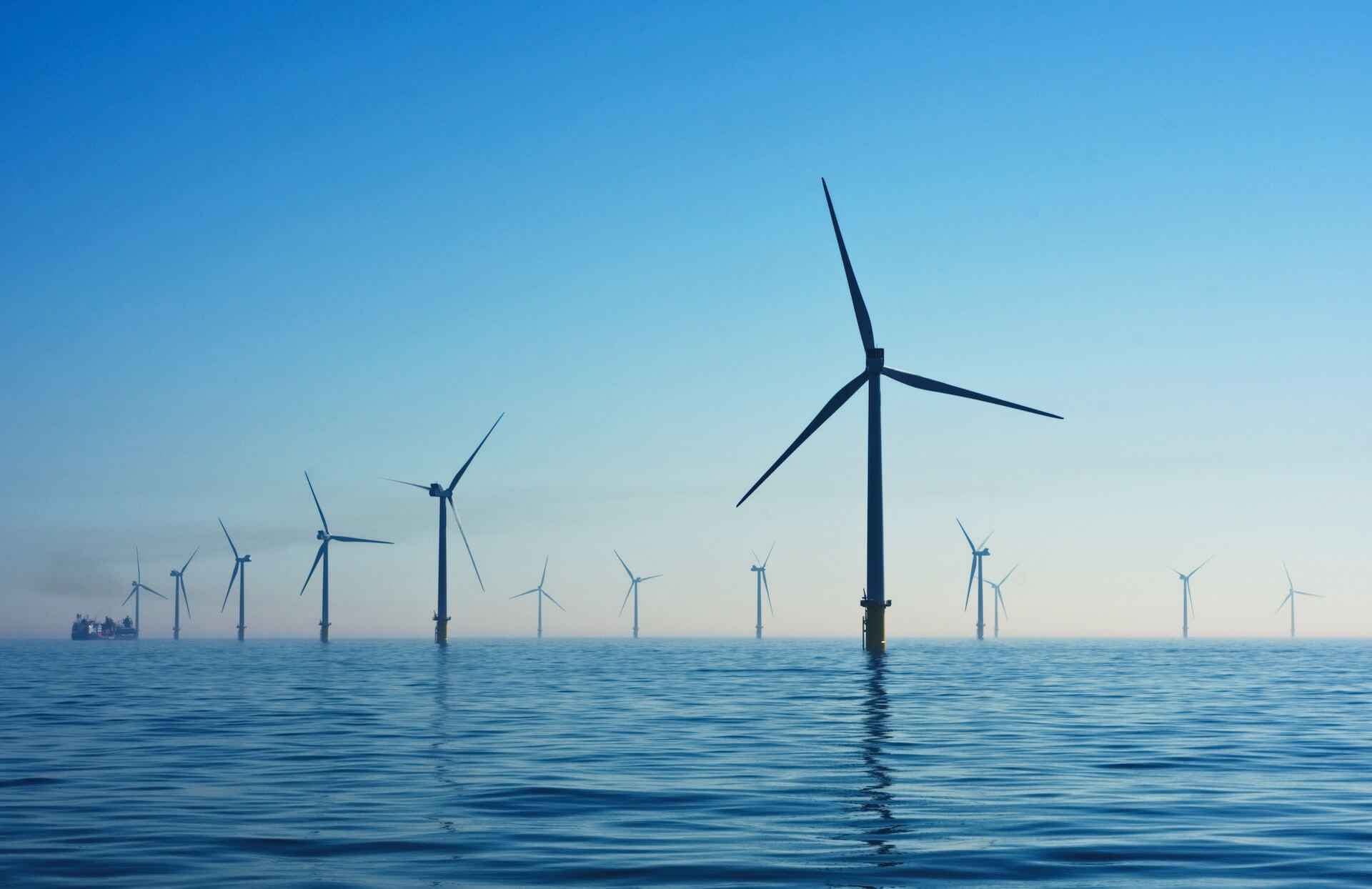
David Maloney, DNV GL (S02 E02)
David Maloney joined us to discuss DNV GL’s new report, Offshore Wind: The Power to Progress. We considered how offshore wind could be a “new conventional” power generation resource, and touched...Read More
BOEM Director Amanda Lefton talks future of OSW (S03 E03)
The Biden Administration has made clear that offshore wind is an important part of America’s growing renewable energy portfolio. BOEM Director Amanda Lefton joins host Brandon Burke to discuss the a...Read More
2019 in Review (S02 E01)
Welcome to the new season of Offshore Wind Insider, the podcast from the Oceantic Network, formally the Business Network for Offshore Wind! 2019 was an eventful year for the American offshore wind ...Read More
Jeff Grybowski (US Wind) (S03 E01)
On the 4th anniversary of the Block Island Wind Farm going into commercial operations, US offshore wind veteran and US Wind‘s new CEO, Jeff Grybowski, returned for his second episode of Offshore Win...Read More
Fara Courtney (Outer Harbor Consulting), Rob Gramlich & Michael Goggin (Grid Strategies LLC) (S02 E09)
Fara Courtney (Outer Harbor Consulting) and Michael Goggin and Rob Gramlich (Grid Strategies LLC) joined us to discuss the Network’s Offshore Wind Transmission White Paper, published on October 26, ...Read More
Tim Sullivan & Brian Sabina (NJEDA) (S02 E08)
Tim Sullivan and Brian Sabina (New Jersey Economic Development Authority) joined us to discuss the New Jersey Wind Port, the WIND Institute, and other developments in New Jersey’s offshore wind prog...Read More
Erik Milito (NOIA), Feng Zhang & Max Cohen (Wood Mackenzie) (S02 E07)
Erik Milito (National Ocean Industries Association) and Feng Zhang and Max Cohen (Wood Mackenzie) joined us to discuss Wood Mackenzie’s August 2020 report “Economic Impact Study of New Offshore Wi...Read More
Steve Dayney, Siemens Gamesa Renewable Energy (S01 E19)
Our guest this episode is Steve Dayney, head of Offshore North America for Siemens Gamesa Renewable Energy. We start our conversation with the company itself—what is Siemens Gamesa and what does it ...Read More
Liz Burdock, Business Network for Offshore Wind (S01 E09)
My guest this episode is our own Liz Burdock, President and CEO of the Oceantic Network, formally the Business Network for Offshore Wind. Our conversation covers both strengths and challenges facing t...Read More
Walt Musial, National Renewable Energy Laboratory (S01 E04)
Our topic for this episode is Technical Standards for Offshore Wind, and our guest is Walt Musial, Manager of Offshore Wind at the National Renewable Energy Laboratory, or NREL. Walt was in Washing...Read More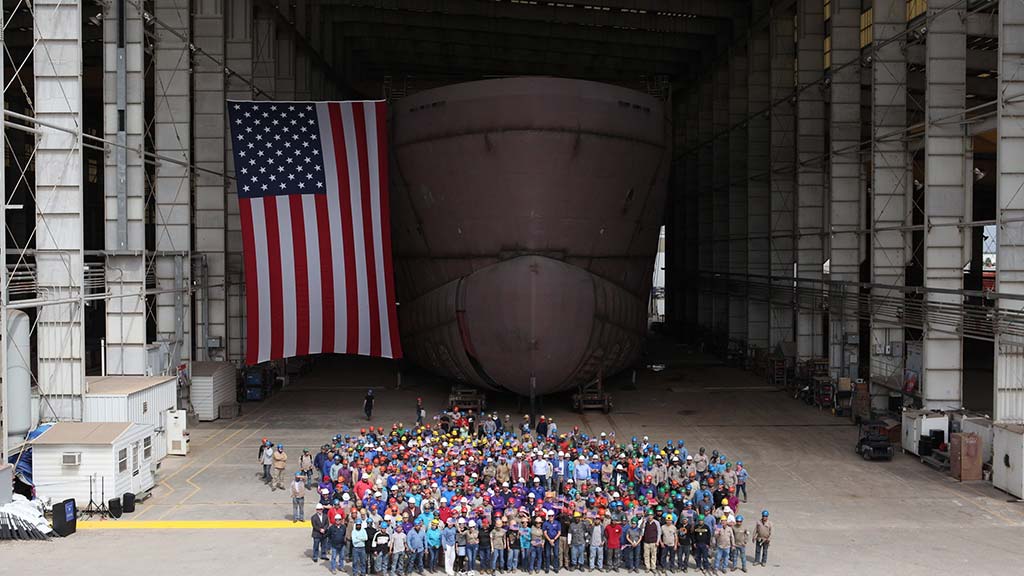
The U.S. Opportunity in Floating Offshore Wind Policy Brief
Offshore wind projects are now under development along much of America’s East Coast, ranging from Maine to the Carolinas. The U.S. offshore wind industry has already seen investments exceeding $3.5 ...Read More
California’s Offshore Wind Future (Season 3 Ep 4)
California, the world’s fifth largest economy, has some of the best offshore wind resources in U.S. waters. The state’s ambitious climate legislation, SB-100, calls for 100 percent clean, carbon-f...Read More
Jeff Grybowski, Chief Executive Officer of Deepwater Wind (S01 E01)
Welcome to the inaugural episode of Offshore Wind Insider, the new podcast from the Oceantic Network. Our guest for this first episode is arguably the person most responsible for America’s first off...Read More
Nse Esema (NYC EDC), Teaera Strum (Strum Contracting), Damian Bednarz (EnBW NA) (S03 E02)
Join host Brandon Burke and guests Nse Esema (NYC EDC), Teaera Strum (Strum Contracting), and Damian Bednarz (EnBW North America) to discuss intersections between offshore wind, diversity, equity, inc...Read More
Lars Thaaning Pedersen, Vineyard Wind (S01 E17)
My guest this episode is Lars Thaaning Pedersen, Chief Executive Officer of Vineyard Wind, soon to be the nation’s first utility-scale offshore wind project. We begin our conversation with Lars and ...Read More
Alejandro de Hoz, Avangrid Renewables (S01 E16)
My guest this episode is Alejandro De Hoz, Vice President for Offshore Wind at Avangrid Renewables. We begin with Alejandro’s background and then look at Avangrid Renewables, and its parent company ...Read More
Ditlev Engel, DNV GL (S01 E14)
Our guest this episode is Ditlev Engel, CEO of DNV GL Energy. We start our conversation by covering what DNV GL does and its participation in the US market. We get Ditlev’s perspective on the US sup...Read More
Tim Fischer, Ramboll (S01 E13)
Our guest this episode is Tim Fischer, Global Director of Offshore Wind for Ramboll. We start our conversation with Ramboll – its mission and its involvement in offshore wind. We then look at the st...Read More
Francesco Onorio, US Wind (S01 E11)
Our guest this episode is Francesco Onorio, Head of Project Development for US Wind. We start the conversation with a brief overview of the company: how it’s involved in the US offshore wind sector,...Read More
Jay Borkland, Lloyd’s Register (S01 E10)
Our guest this episode is Jay Borkland, Senior Engineering Manager for Renewables at Lloyd’s Register Energy Americas. Lloyd’s Register has a long and rich maritime history which is well suited to...Read More
Sven Utermöhlen, E.ON (S01 E08)
Our guest this episode is Sven Utermöhlen, COO for offshore wind globally and for European onshore wind at E.ON. E.ON may be new to U.S. offshore wind, but it’s an established leader in the global ...Read More
Gunnar Herzig, World Forum Offshore Wind (S01 E07)
Our guest this episode is Gunnar Herzig, Managing Director of WFO, the World Forum Offshore Wind, a new organization dedicated to advancing offshore wind globally. We start the conversation by cove...Read More
Paul Gallagher and Doug Copeland, Nautilus Offshore Wind (S01 E03)
Our guests are Paul Gallagher, Secretary of Fishermen’s Energy and Doug Copeland, regional project manager for EDF Renewables. Paul and Doug are leading the development of the Nautilus Offshore Wind...Read More
Joe Fiordaliso, President, New Jersey Board of Public Utilities (S01 E02)
Our guest for this episode is Joe Fiordaliso, President of the New Jersey Board of Public Utilities. It hasn’t even been a full year since Governor Phil Murphy’s administration took office, and...Read More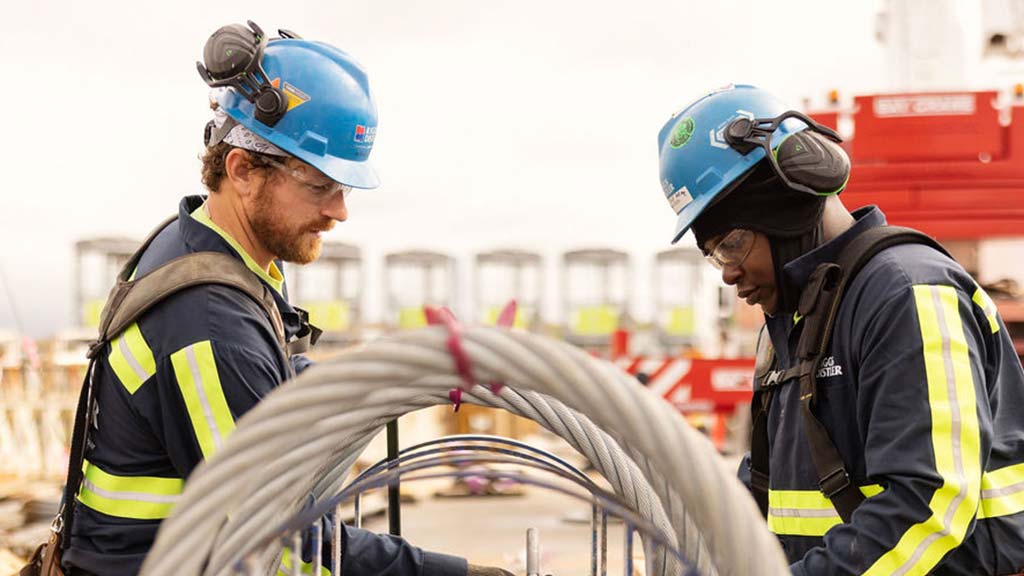
Advancements in Coordinated Transmission Approaches
The Biden Administration has expressed a clear intention to both kickstart the U.S. offshore wind industry and completely transform America’s overall electricity infrastructure. To achieve the Admin...Read More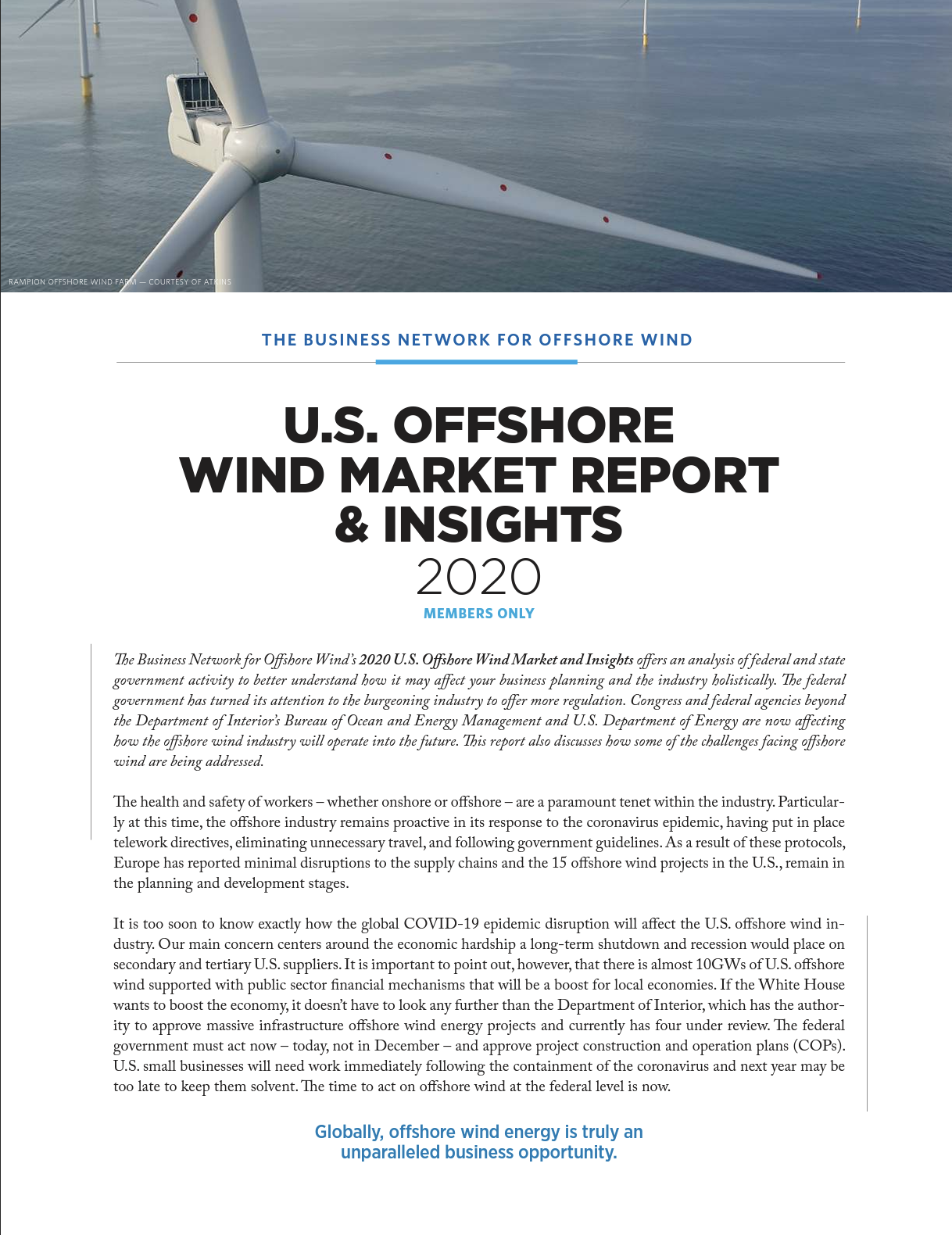
2020 U.S. Offshore Wind Market Update & Insights
The 2020 U.S. Offshore Wind Market and Insights offers an analysis of federal and state government activity to better understand how it may affect your business planning and the industry holistically....Read More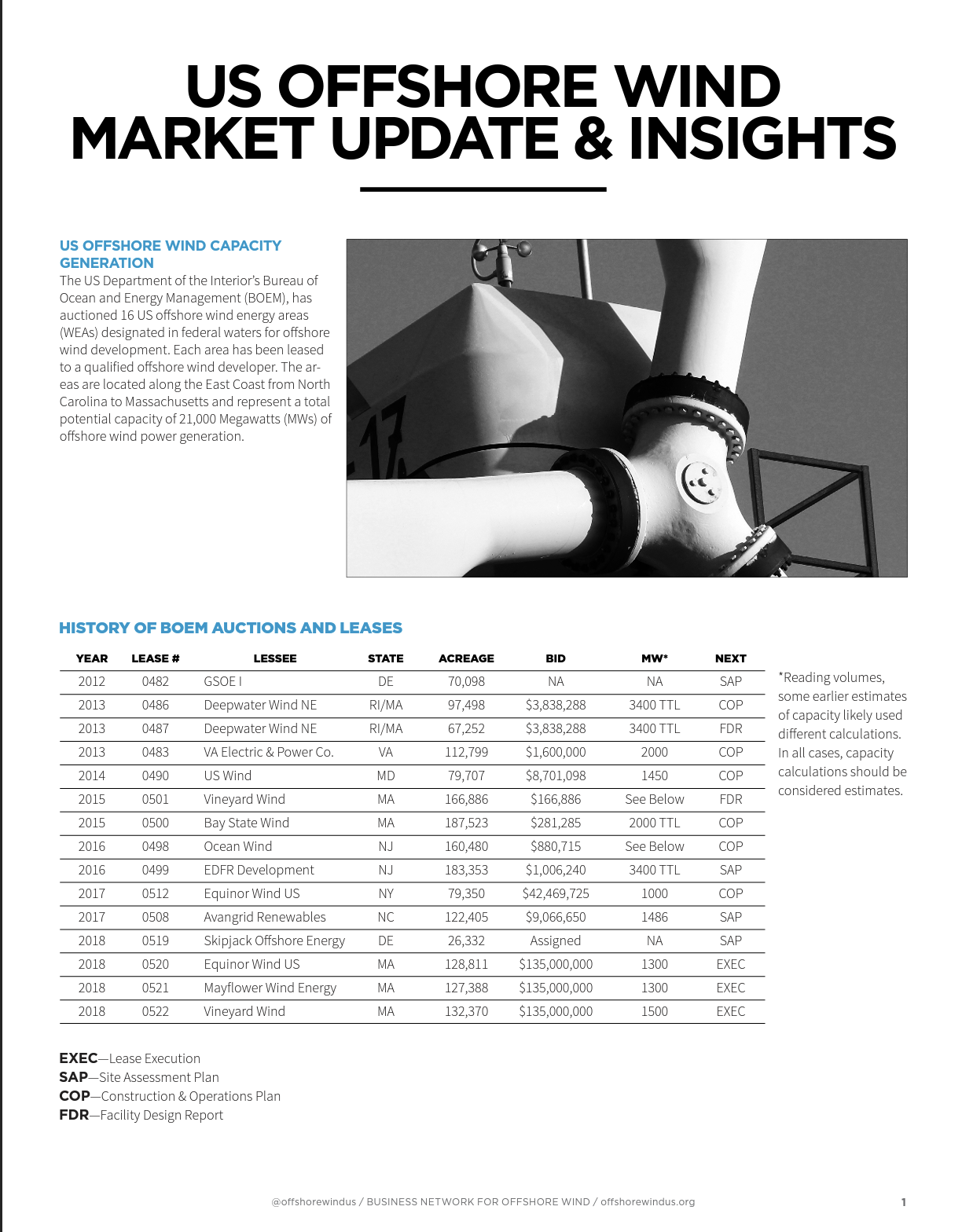
2019 U.S. Offshore Wind Market Update & Insights
The U.S. Department of the Interior’s Bureau of Ocean and Energy Management (BOEM), has auctioned 16 US offshore wind energy areas (WEAs) designated in federal waters for offshore wind development. ...Read More

